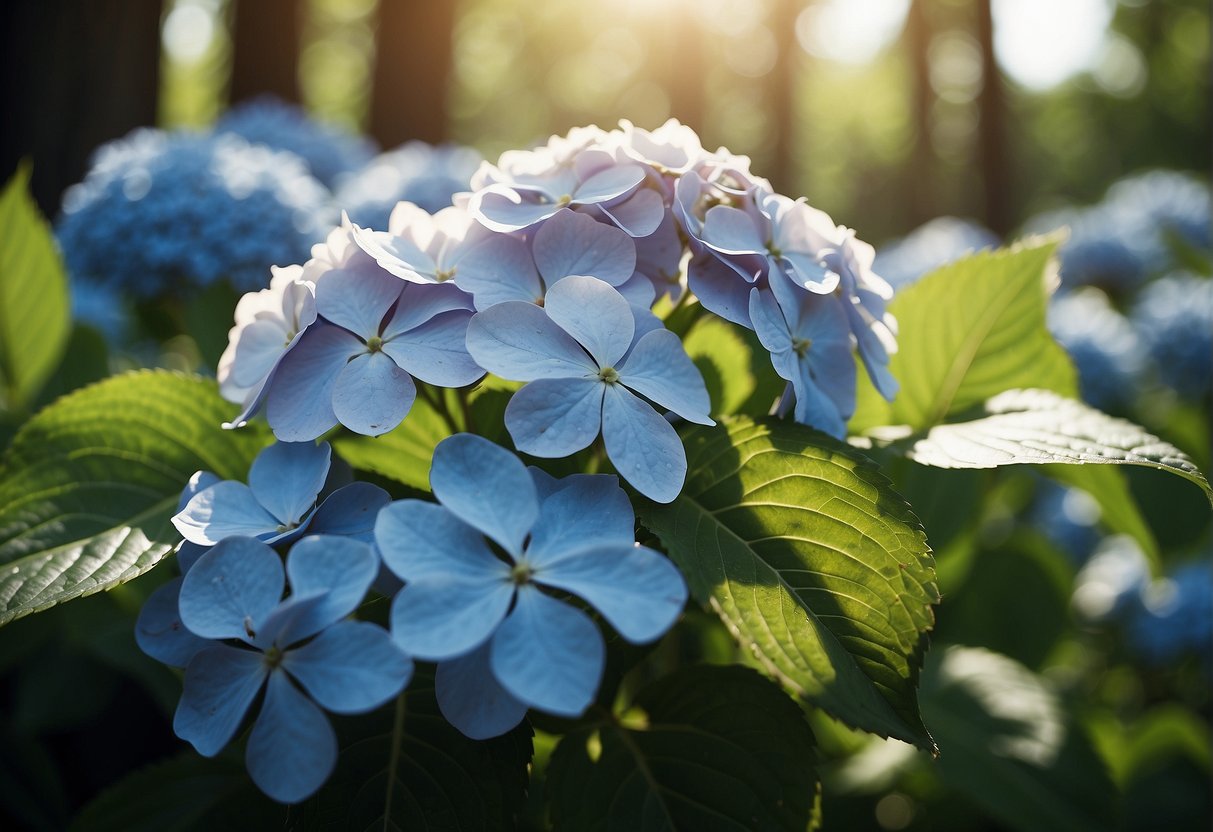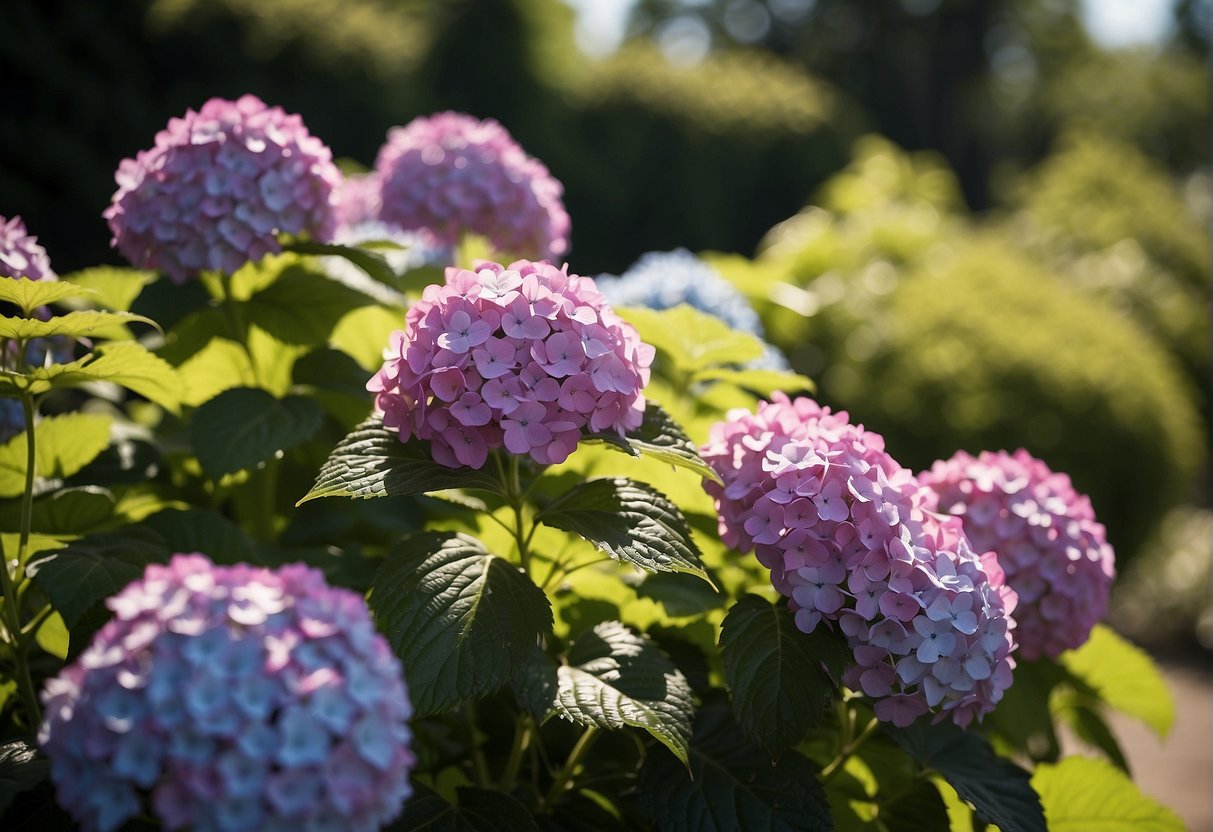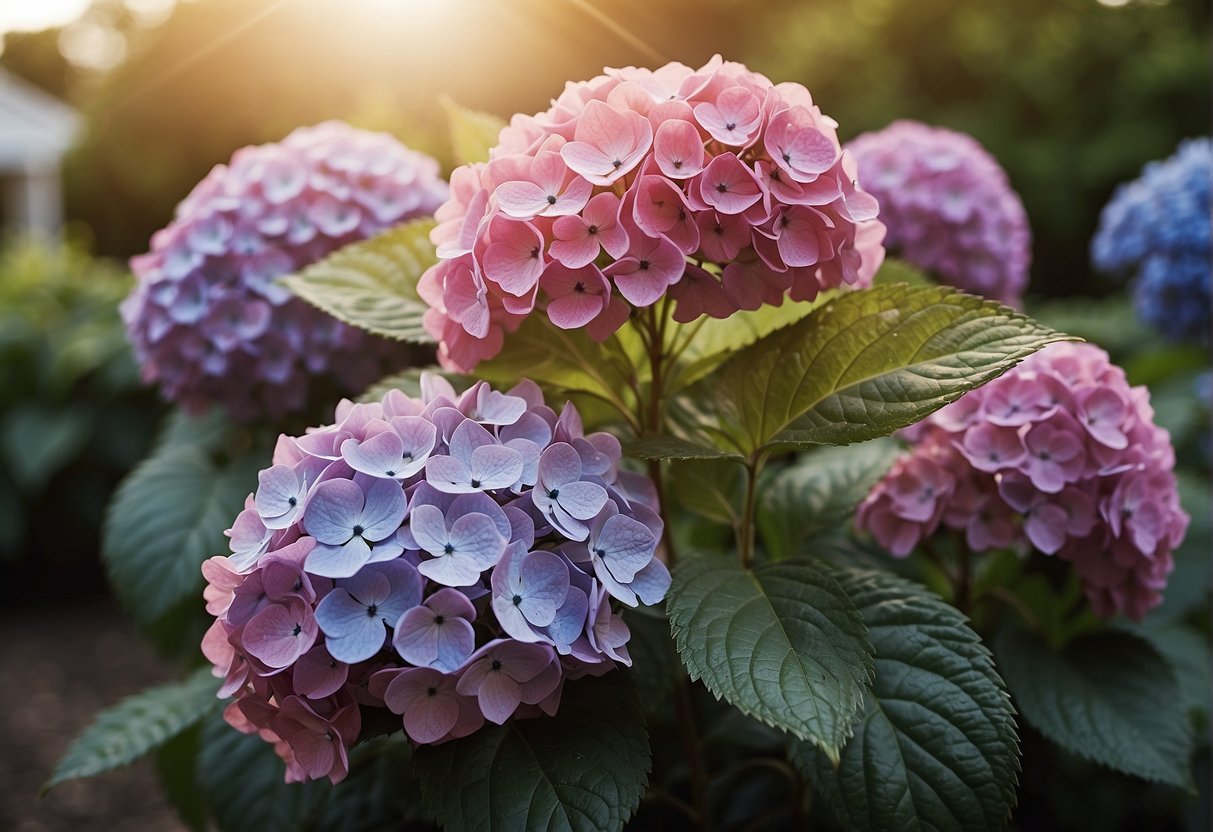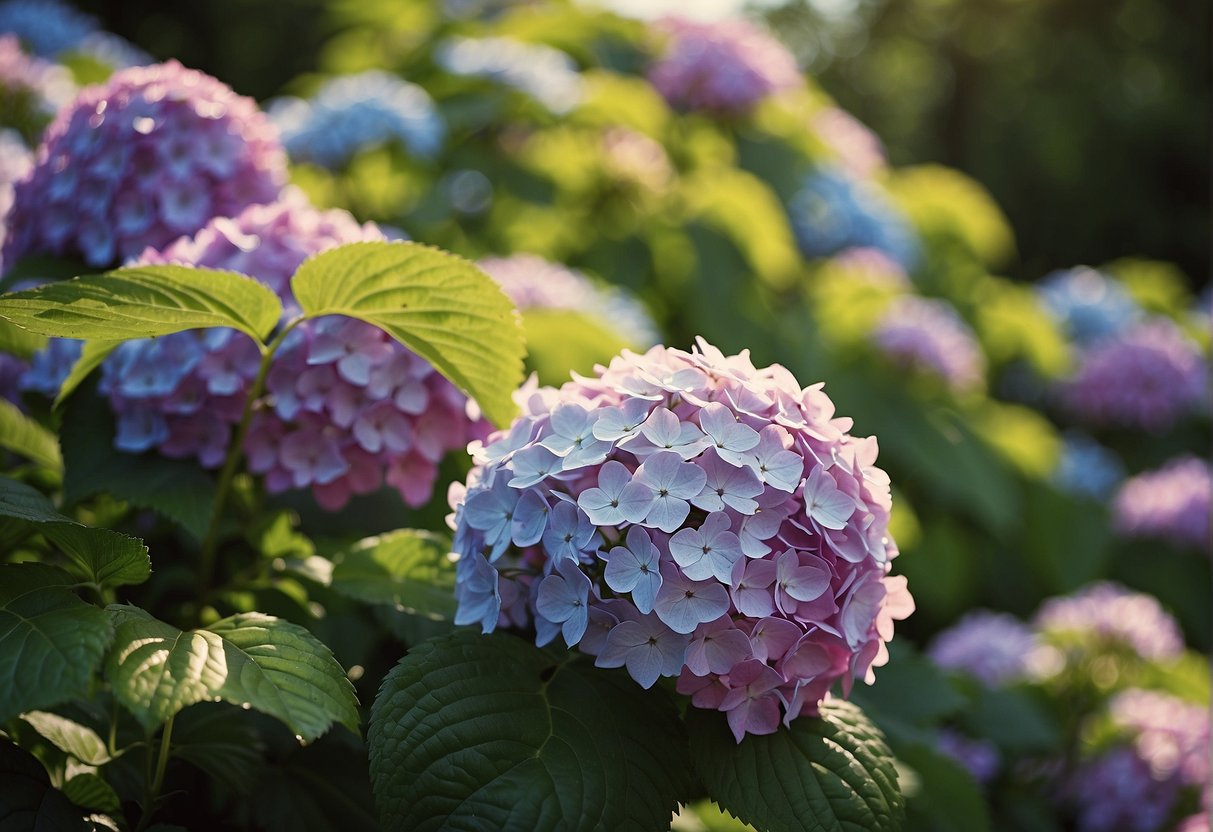Do Hydrangeas Like Sun or Shade? A Gardener’s Guide to Growing Hydrangeas
Hydrangeas are a popular choice for gardeners looking to add some color and texture to their outdoor space. These beautiful flowering plants come in a variety of colors and sizes, making them a versatile addition to any landscape. However, one question that often arises when it comes to growing hydrangeas is whether they prefer sun or shade.

The answer to this question is not a simple one, as it can vary depending on the specific type of hydrangea you are growing. Some varieties of hydrangeas prefer full sun, while others prefer partial shade. Understanding the needs of your particular hydrangea plant is key to ensuring its health and longevity. In this article, we will explore the different types of hydrangeas and their sun and shade preferences, so you can make an informed decision when it comes to growing these beautiful plants in your own garden.
Understanding Hydrangea Preferences
Hydrangeas are popular ornamental plants that are valued for their large and showy flowers. They are easy to grow and care for, but it is important to understand their sunlight preferences to ensure they thrive in your garden.
Sunlight Needs
Hydrangeas prefer to grow in locations that receive partial shade to full shade. They can tolerate some sunlight, but too much exposure to direct sunlight can cause their leaves to wilt and their flowers to fade quickly. Morning sun and afternoon shade are ideal for most hydrangea varieties.
Some hydrangea varieties, such as the panicle hydrangea, can tolerate full sun. However, they still need some protection from the hot afternoon sun to prevent their leaves from drying out. It is important to note that full sun can cause the flowers to turn brown and wilt quickly.
Shade Tolerance
Hydrangeas are shade-tolerant plants that can grow well in areas with filtered or dappled shade. They can also grow in full shade, but their growth and flower production may be limited. In full shade, hydrangeas may become leggy and produce fewer flowers.
It is important to note that too much shade can also be detrimental to hydrangeas. They need some sunlight to produce flowers and maintain healthy foliage. If they are grown in deep shade, their leaves may become yellow and their growth may be stunted.
In summary, hydrangeas prefer to grow in locations with partial shade to full shade, and they can tolerate some sunlight. Morning sun and afternoon shade are ideal for most varieties. They are also shade-tolerant plants that can grow in areas with filtered or dappled shade. It is important to find the right balance of sunlight and shade to ensure that your hydrangeas thrive in your garden.
Optimal Growing Conditions
Soil Requirements
Hydrangeas prefer a well-drained soil that is rich in organic matter. The ideal pH range for hydrangeas is between 5.2 and 6.5. If the soil is too alkaline, the plant may not be able to absorb nutrients properly. Adding compost or other organic matter to the soil can improve its structure and fertility.
Watering and Moisture
Hydrangeas require regular watering, especially during the growing season. The soil should be kept moist but not waterlogged. Overwatering can lead to root rot, while underwatering can cause the plant to wilt and die. A layer of mulch around the base of the plant can help to retain moisture and regulate soil temperature.
Climate Considerations
Hydrangeas thrive in temperate climates with moderate temperatures and high humidity. They prefer partial shade, especially during the hottest part of the day. In areas with hot, dry summers, it may be necessary to provide additional shade or water to prevent the plant from drying out. In colder climates, hydrangeas may need extra protection during the winter months to prevent frost damage.
Overall, hydrangeas are relatively easy to grow and care for as long as their basic needs are met. By providing the right soil, water, and climate conditions, gardeners can enjoy beautiful blooms and lush growth from their hydrangea plants.
Hydrangea Varieties and Their Sun Exposure

When it comes to growing hydrangeas, one of the most important factors to consider is the amount of sunlight they receive. While some hydrangea varieties thrive in full sun, others prefer partial or even full shade. In this section, we’ll take a closer look at two of the most popular hydrangea varieties and their sun exposure preferences.
Bigleaf and Lacecap Hydrangeas
Bigleaf and lacecap hydrangeas (Hydrangea macrophylla) are some of the most popular types of hydrangeas, known for their large, showy blooms that range in color from blue and purple to pink and white. These hydrangeas prefer partial shade, with some protection from the hot afternoon sun. In areas with very hot summers, they may benefit from some morning sun and afternoon shade. It’s important to note that bigleaf and lacecap hydrangeas are sensitive to soil pH, with blue flowers indicating acidic soil and pink flowers indicating alkaline soil.
Panicle and Oakleaf Hydrangeas
Panicle and oakleaf hydrangeas (Hydrangea paniculata and Hydrangea quercifolia, respectively) are another popular type of hydrangea that are known for their hardiness and adaptability. These hydrangeas can tolerate more sunlight than bigleaf and lacecap hydrangeas, and can even thrive in full sun with plenty of water. Panicle hydrangeas, in particular, are known for their large, cone-shaped flower clusters that start out white and turn pink or red as they mature. Oakleaf hydrangeas, on the other hand, are known for their large, lobed leaves that turn a beautiful shade of red in the fall.
In conclusion, when choosing a hydrangea variety for your garden, it’s important to consider the amount of sunlight the plant will receive. Bigleaf and lacecap hydrangeas prefer partial shade, while panicle and oakleaf hydrangeas can tolerate more sun. With the right amount of sunlight and proper care, any of these hydrangea varieties can be a beautiful addition to your garden.
Caring for Hydrangeas Throughout the Seasons

Hydrangeas are a popular choice for gardeners looking to add some color and interest to their outdoor space. However, to keep these flowering shrubs looking their best, it is important to provide them with the right care throughout the seasons. Here are some tips for maintaining healthy and beautiful hydrangeas:
Pruning and Maintenance
Pruning is an essential part of hydrangea care, as it helps to promote healthy growth and ensure that the plant produces plenty of flowers. The timing and method of pruning will depend on the species of hydrangea you are growing. For example, hydrangea quercifolia and smooth hydrangeas should be pruned in late winter or early spring, while panicle hydrangeas can be pruned in late summer or early fall.
In addition to pruning, it is important to keep your hydrangeas well-maintained throughout the growing season. This may involve deadheading spent flower heads, removing damaged or diseased wood, and ensuring that the plant receives deep watering during dry spells.
Winter Protection
Hydrangeas are generally hardy plants, but they may require some extra protection during the winter months. This is especially true for new plantings and varieties that are less hardy than others. To protect your hydrangeas from winter damage, consider adding a layer of mulch around the base of the plant, or wrapping the plant in burlap to shield it from harsh winds and freezing temperatures.
Fertilization and Nutrient Management
Proper fertilization is key to keeping your hydrangeas healthy and vibrant. When selecting a fertilizer, look for one that is high in phosphorus, as this will help to promote flower production. It is also important to ensure that your hydrangeas are receiving the right amount of nutrients throughout the growing season. This may involve adding compost or other organic matter to the soil, or using a slow-release fertilizer to provide a steady supply of nutrients over time.
By following these tips for hydrangea care, you can help ensure that your plants thrive and provide beautiful blooms throughout the growing season. Whether you are planting a new hydrangea bush or maintaining an existing one, these gardening tips can help you achieve success with this versatile and beautiful plant.
Frequently Asked Questions

Can hydrangeas thrive in full sun conditions?
Hydrangeas can tolerate full sun conditions, but they prefer partial shade. If they are planted in full sun, they will require more water and the blooms may not last as long. It is recommended to plant hydrangeas in an area that receives morning sun and afternoon shade.
Are hydrangeas suited for growing in full shade environments?
Hydrangeas can grow in full shade, but they may not bloom as well as they would in partial shade. It is important to note that even in full shade, hydrangeas still require some light to grow and thrive.
What are the sunlight requirements for dwarf hydrangea varieties?
Dwarf hydrangeas, like other hydrangeas, prefer partial shade. However, they can tolerate more sun than their larger counterparts. It is recommended to plant dwarf hydrangeas in an area that receives morning sun and afternoon shade.
Is it beneficial to use coffee grounds for hydrangea plants?
Coffee grounds can be beneficial for hydrangea plants as they help to increase soil acidity. However, it is important to use them in moderation as too much can make the soil too acidic. It is recommended to mix coffee grounds with other organic matter before adding them to the soil.
How does soil acidity affect the growth of hydrangeas?
Soil acidity plays a crucial role in the growth and color of hydrangea blooms. In acidic soil, hydrangeas produce blue blooms, while in alkaline soil, they produce pink blooms. It is important to test the soil pH before planting hydrangeas and adjust it accordingly to achieve the desired bloom color.
What are the water needs for hydrangeas to ensure healthy growth?
Hydrangeas require regular watering to ensure healthy growth. They prefer moist, well-drained soil and should be watered deeply once a week. During hot and dry periods, they may require more frequent watering. It is important to avoid overwatering as this can lead to root rot.


